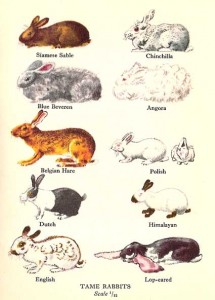Nibbles: Chilli, Extension, Africa, Genebank, Potatoes, War, Angora
- Cool new use for hot peppers: fungicides, for agriculture and human health.
- Community Knowledge Workers transformed into “Mobile Banana Disease Monitors”.
- Grain “call[s] on African peasants to resist and protect their agriculture, as they have always done”.
- Near Corvallis, Ore, USA? Wanna tour the genebank? Wanna write it up for us?
- New World Catalogue of Potato Varieties. A pedant asks: “Any Old World varieties in there?”
- Germany is said to be demanding entire Rumanian wheat crop, also part of what is left over from 1938 crop. Orwell’s approaching war.
- Saving the Angora goat in the US.
“Barley-wheat” explained
There’s a National Agricultural Science Museum on ICAR’s the Indian Agricultural Research Institute’s Pusa Campus 1 and I spent an enjoyable hour or so wandering around it during my recent visit to Delhi. One floor takes the visitor on a whirlwind tour of agriculture on the subcontinent from the Neolithic to the Green Revolution. Then you go down some stairs for exhibits on the current state of Indian agriculture. The displays and eye-catching, informative and well-arranged. My only complaint would be about the lack of explicit references to the importance of agrobiodiversity, its conservation and use, for sustainable agriculture, apart from a poster on the Green Revolution. But then the National Bureau of Plant Genetic Resources has its own museum.
Taking photographs was not allowed, so I can’t show you the wonderful diorama of a Mughal garden, and other great exhibits. I do hope the museum goes online sometime. Best I can do at the moment is this scan of the brochure that is handed out as you leave (click to enlarge).
Continue reading ““Barley-wheat” explained”
Nibbles: Traditional knowledge, Opium poppy, Fish, Bees, Earthworms, Wild horses, Camel, Fearl rabbits, Guinea savannah, Kava
- “In the face of climate change, keeping diverse, resilient ecosystems is one of the strongest tools for adaptation.”
- Getting high in Eden.
- Chinese ate freshwater fish 40,000 years ago.
- British MPs finish cleaning their moats, decide to save the honeybee.
- Worm power!
- LEISA 25:2 is out.
- Przewalski’s horse gets first ever reverse vasectomy.
- Early farmers used camel-drawn carts.
- Using Google Earth to map bunnies in Australia. And then kill them.
- Farming the savannah. What could go wrong?
- Stressed out? Try kava. With audio goodness.
Nibbles: Rice breeding, ICRISAT, Arkansas heirlooms, Rice domestication, Livestock products
- Oldest rice research facility in Western Hemisphere turns 100.
- ICRISAT DG plugs his genebank, says “India should start investing for the long-term sustainability of the farming sector particularly in dryland agriculture.”
- Seed-saving in Arkansas.
- The Archaeobotanist reviews rice domestication. And again.
- Nordics to discuss how to develop products based on local livestock breeds.
